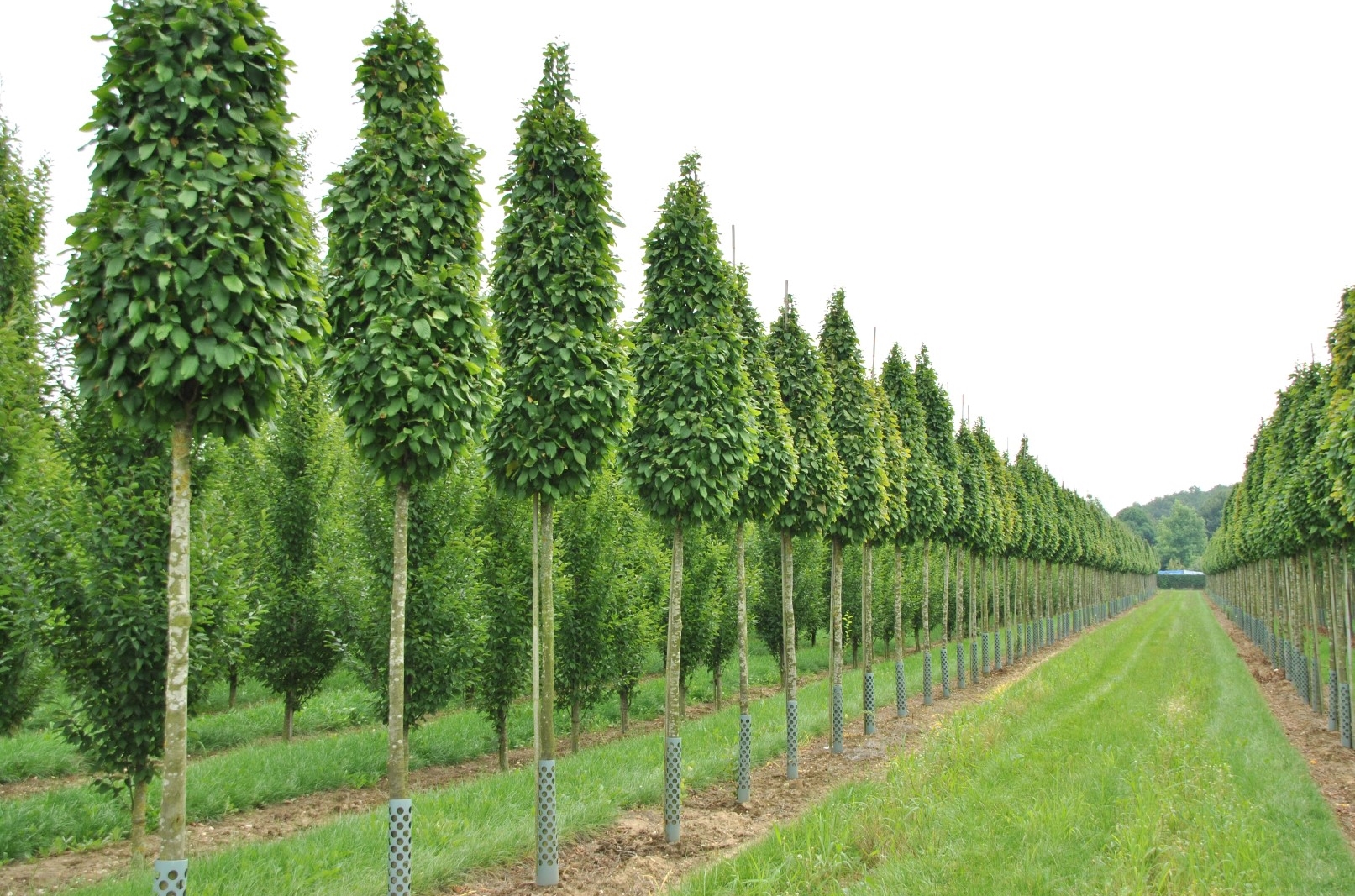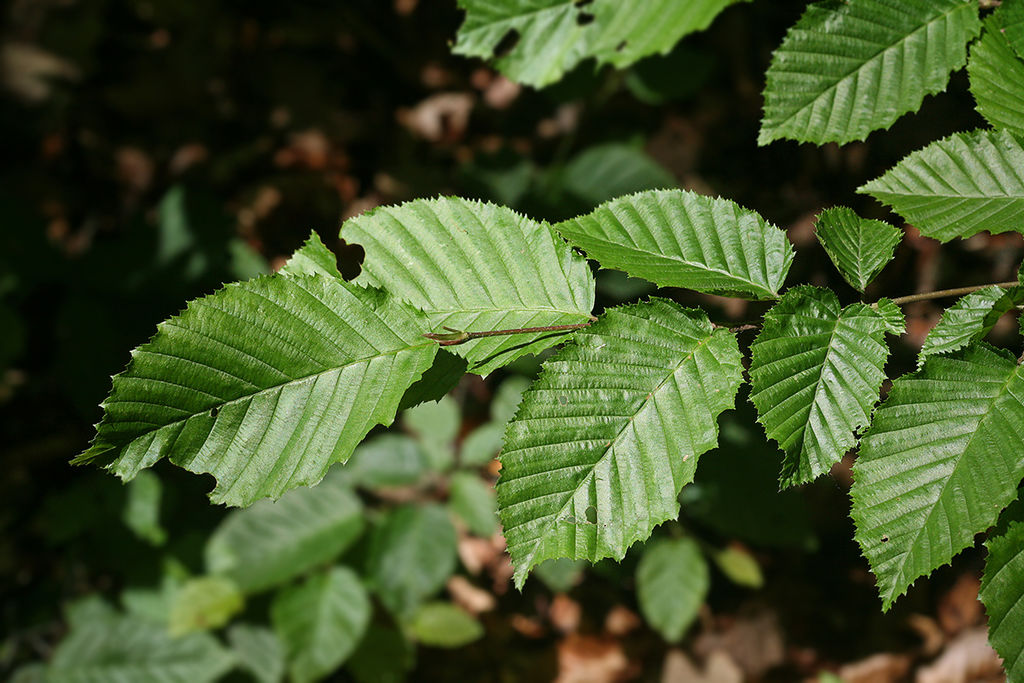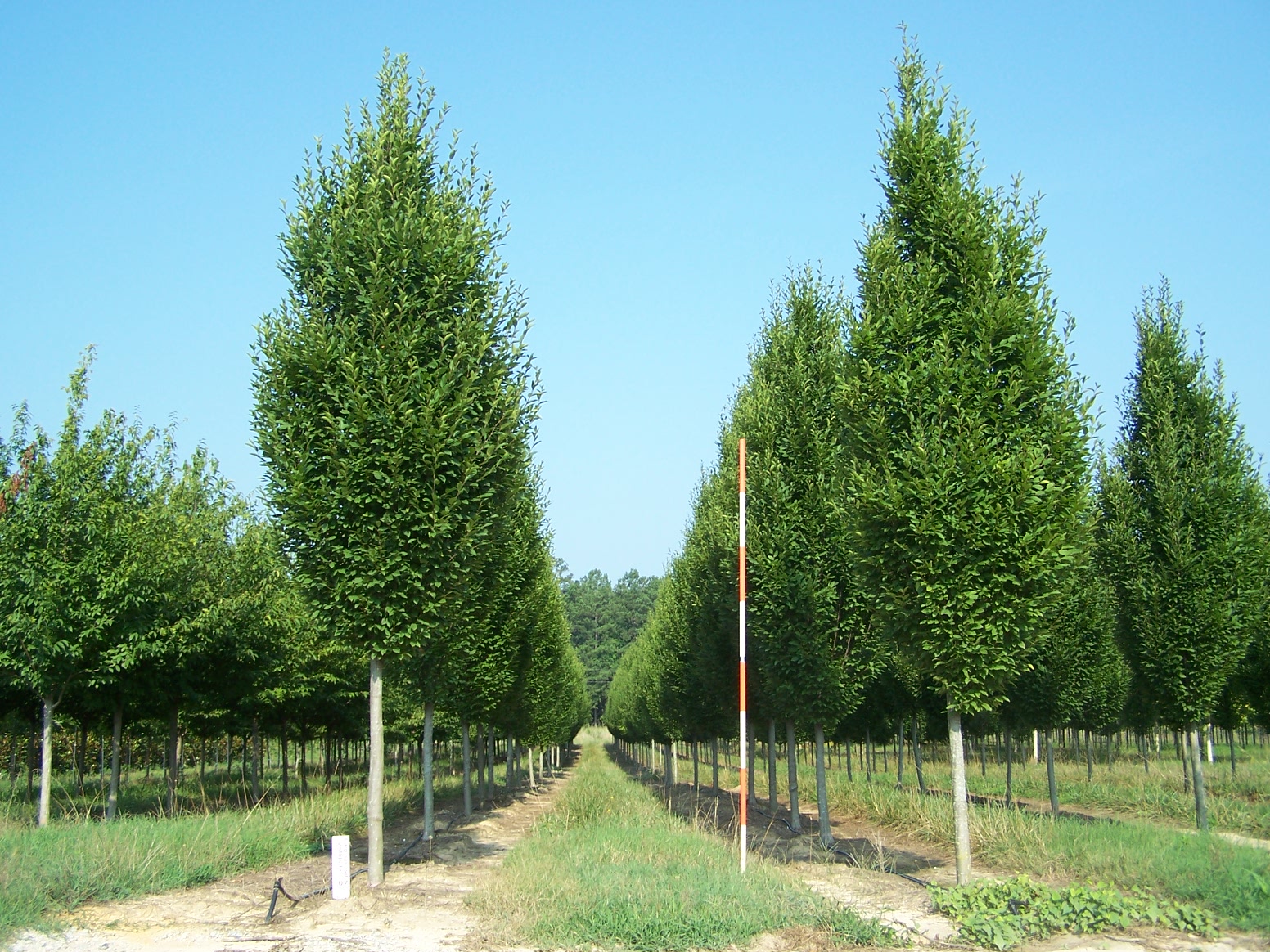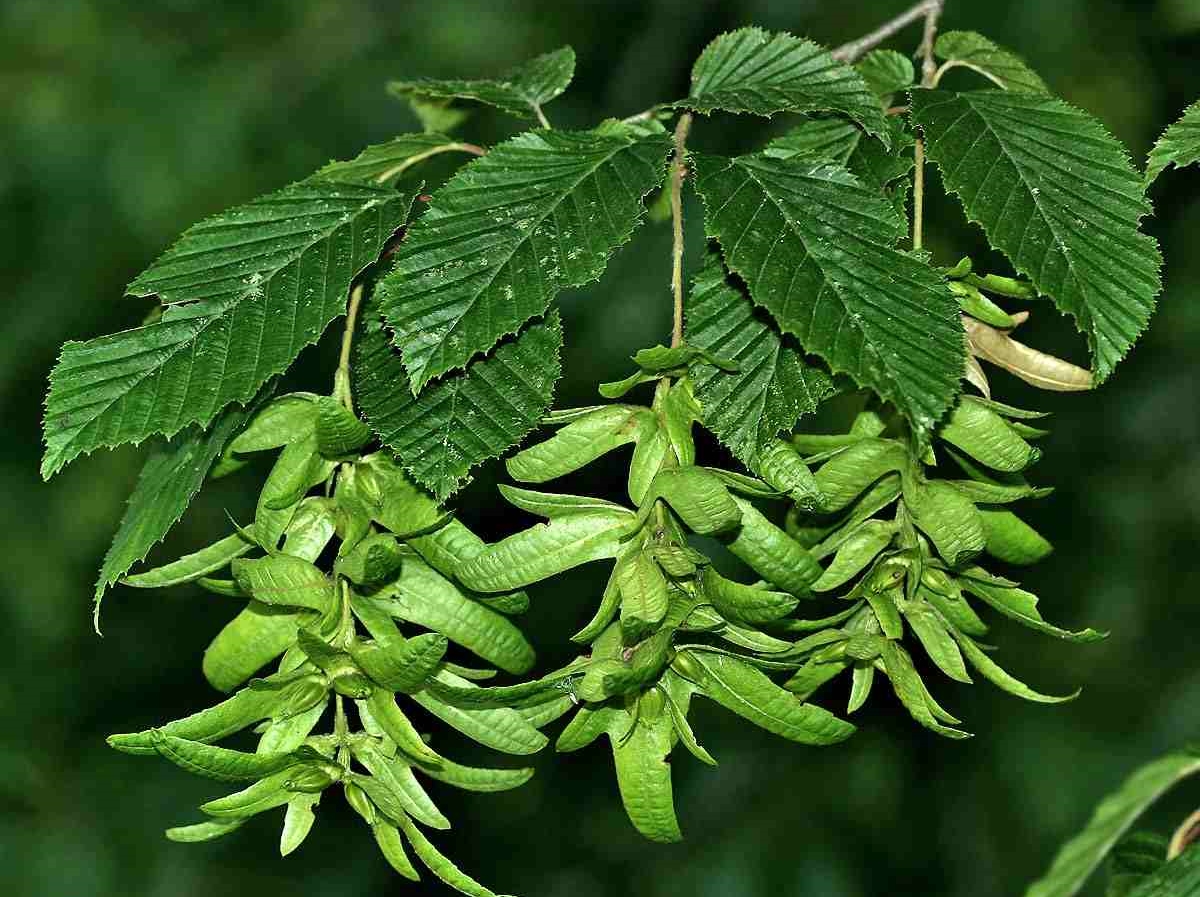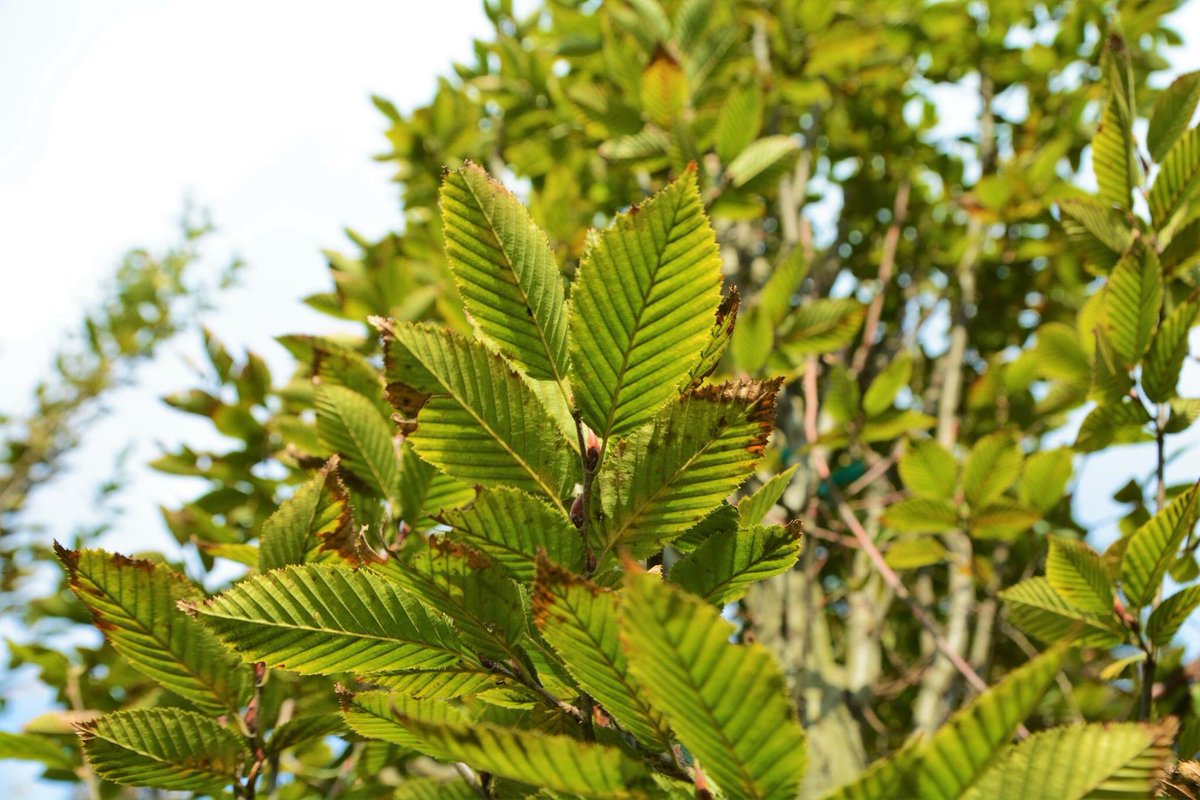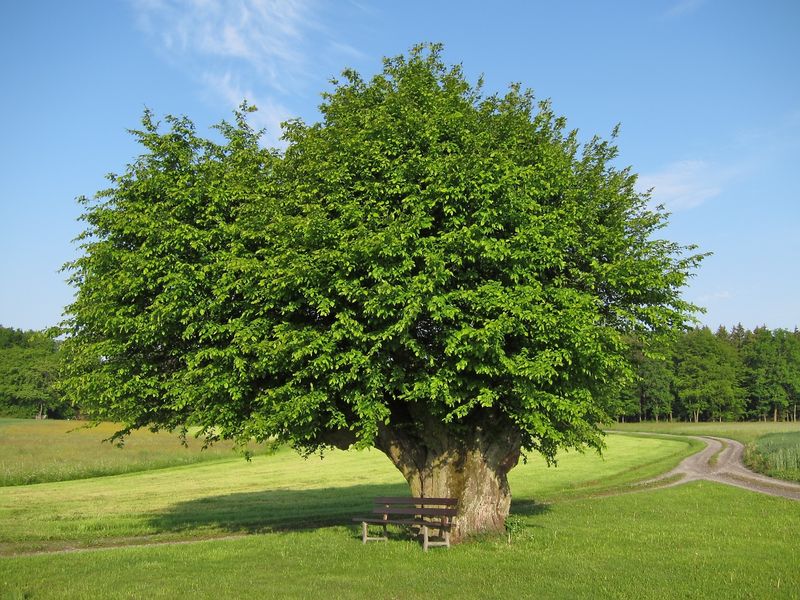Among the large Birch family, trees from the Grab clan occupy a considerable place. Representatives of the species fill the deciduous forests of the temperate zone of different continents of the Northern Hemisphere. About 30 species can be found in mixed and single stands of flat terrain and foothills. All of them are decorative, used in landscaping public forest park areas and private plots. One of the representatives is the Western European species The common hornbeam - a graceful tree with a thin even trunk and a chic, round, dense crown.
Material Content:
Botanical description of the species and growing conditions
The distribution area of this species is extensive, in the wild, the hornbeam tree grows in the mild climate of the middle strip from Western and Eastern Europe to the Mediterranean Sea, in the Caucasus and Asia Minor on loose calcareous and moderately moist soils in the company of hardwoods, however, there are also its own massifs. He loves light and heat, at the same time, is shade-hardy and frost-resistant, with winter hardiness increases - it can withstand up to -25o.
European hornbeam is a deciduous tree long-lived, the average age is 200 years, grows from 7 to 12 m. True, some specimens sometimes live up to 300 years and rise to 25 m.
The crown is lush, dense, and with its sufficient volumes reaching 8 m, the trunk diameter gains a maximum of 40 cm, giving the plant a sail and visual fragility.Despite the fact that the root system of the hornbeam is superficial, it is powerful and widespread, with the presence of deeper lateral "anchor roots", which makes the tree wind-resistant.
The bark of the trunk is light gray, silvery, smooth in youth, then it becomes ribbed, gradually covered with small cracks, deeply cracking with age.
The leaves of the hornbeam are large alternate, up to 15 cm long, not wide 5 cm, petiolate, oval-pointed, with a serrated edge. The upper side of the leaf plate is smooth, the lower side with pronounced bright veins, pubescent. In summer, the foliage is dark green, in the autumn period it changes color to yellow and crimson.
It begins to bloom in late April or early May at the same time as the buds open, lasting 8-12 days. The monoecious plant is pollinated with the help of wind. Earrings of two types open:
- stamens - friable, small up to 5-6 cm and 1 cm thick, with 5-7 stamens in which anthers are pubescent. They are covered with yellowish pointed scales, reddish-brown and ciliated along the edge;
- pistillate - long up to 15 cm, with three-bladed leathery fruit wraps, 3-6 cm long, whole-edge or serrated.
The fruit is a small flattened ribbed brown nut, 3–6 mm. In one earring can be up to 30 pieces. Fruiting in September – October.
The crown is made up of thin long flexible branches. In spring, they are brown in color along the edges, hanging like a willow, and straighten in summer. Easy to tolerate pruning, they can be given any shape.
There are decorative varieties that reflect the shape of the crown, leaf plate and leaf color:
- pyramidal hornbeam, weeping, columnar;
- notched - with dissected narrow leaves;
- oak-leaved - leaf plates are small, deeply lobed with wide teeth;
- purple - brown immediately bloom, then change color to plain green;
- variegated - there are several shades.
These picturesque hornbeam features and formation ability are widely used by designers and are used as decorative trees.
Seat selection and proper fit
According to many experienced specialists, the hornbeam is a medium-demanding plant, but dense acidic and saline soils, as well as lowlands and close occurrence of groundwater, do not contribute to its decorative effect. Fresh, nutritious, calcareous soil with moderate moisture is preferable, but it can grow even on stony and dry soil, most importantly, the soil should be loose and alkaline (pH 6.5–8).
The best time for planting is autumn, 2-3 weeks before frost, so that the tree has time to take root, but it is possible at any other time of the year, only the seedling will take root longer. Plant preferably two-year-old plants. The place is chosen bright and spacious, shading of the site is possible.
Prepare a landing pit in advance. The dimensions should be twice the size of the earthen seedlings, usually 50x50 cm is enough. Garden soil is mixed with humus to fill the hole, fallen leaves are added, the earth should be loose. If the soil is acidic - add one of the proposed tools:
- 0.5 kg of dolomite flour;
- 300 g of chalk;
- 1 kg of wood ash;
- calcium nitrate (calcium nitrate (according to instructions).
After mixing the components, fill the pit, spill 10 liters of water and leave the soil to settle.
Do not use other fertilizers together with deoxidizing components, they react with each other and can burn the roots of the tree. It will be more beneficial to feed the plant in 3–6 months.
After a few days, the culture is planted in the hole. Too long roots can be trimmed if only there is a sufficient number of suction roots. Once again, they spill a large volume of water and mulch the soil of the trunk circle to retain moisture. When frost is approaching, it is better to warm the tree. To fill up a trunk circle with dry leaves, sawdust or peat and cover with a spanbond, having built a wooden frame over the seedling.
The culture grows slowly for the first 10 years, then the growth rate increases and amounts to an annual growth of 20–25 cm in height and 4 mm in diameter. Then, at 35–40 years old, growth slows down, and at 90–100 it stops altogether.
The nuances of caring for hornbeam
The hornbeam belongs to mesophytes, which emphasizes its exactingness to moisture, therefore, the main care measures are aimed at maintaining moderate, but constant moisture of the soil. Especially in hot and dry climates, watering should be plentiful, a lack of water will immediately affect the condition of the leaves. For hedges, a good solution would be to use drip irrigation.
Additional fertilizing the tree is not needed, as it itself improves the composition of the soil. In autumn, hornbeam leaves curl and fall, forming a loose litter that rotts to spring. A slightly acidic soil is formed, rich in soft humus, enriched with useful microelements, which is quite favorable for the successful growth of the plant.
A necessary condition for care is sanitary pruning. It is held in the spring. Sick, dry, frozen branches and young shoots inside the planting that violate the decorativeness and health of the plant are removed.
Tree propagation methods
The hornbeam resumes well. Several reproduction techniques.
- The seeds. Due to the extremely plentiful and frequent fruiting, there is no shortage of seeds. Hornbeam nuts can lie under a tree for up to 3 years without losing germination. Usually in spring, numerous young shoots appear that can be used as seedlings. Germination of dry seeds is 50–70%. Before planting, they are etched with potassium permanganate or fungicides, and stratified. First, seeds soaked in warm water are steamed at + 25o for a month, then frozen at -10o and kept there for 3-4 months. The hardened seeds are heated and planted in a germination tank or directly into the ground.
- Vegetative methods are little-used methods of reproduction.
- layering: the European hornbeam has the ability to give spontaneous layering from sleeping kidneys at the base of the trunk. From such branches you can get new sprouts. To do this, it is necessary to bend the orthotropic shoot, extending from the base of the trunk to the ground, fix it with a hairpin and after a while a sprout appears in the place of contact with the ground;
- the shoots arising on stumps from felled trees are also viable and well rooted. The most resilient shoots are obtained from winter felling of trunks. Sprouts that appeared in the spring have time to lignify and meet frosts already stronger.
Saplings of seed origin are stronger, have good immunity, grow more slowly, but retain all the decorative qualities of the mother plant.
The sprout shoots grow faster due to maternal roots, but are also more susceptible to destruction by rot, penetrating everything from the same dying maternal roots.
Diseases and Pests
The genus hornbeam is practically not damaged by insect parasites and fungal ailments, only if the vitality of the tree is not weakened. Prolonged heat and drought can undermine plant immunity.
Possible diseases caused by fungal spores: various rot of the trunk, cancer, deformation and drying of the branches. Disease can be prevented by preventive spraying with tree fungicides and seed treatment before sowing.
Among the insects that can harm the hornbeam, one can distinguish leaf-eating caterpillars of beech weevil, birch tuberevert and silkworm. Pests of the trunk are sapwood, beetles, chestnut barbel bugs. Their damage is so slight that it does not pose a threat to the life of the tree. And yet, preventive spraying with insecticides will not interfere.
Useful properties and application
The Hornbeam Ordinary is appreciated by the strength of wood, the useful chemical composition of the vegetative parts used for medicinal purposes by folk healers. Decorative trees with amazing shapes are successfully used in landscape design.
The wood in cross section is very aesthetic, the shiny white or light gray surface has winding barely noticeable annual rings that form a bizarre pattern. Unusual strength and hardness in conjunction with the picturesque rocks found application:
- in the manufacture of designer furniture;
- household items, for example, chopping boards, handles for axes, shovels and knitting needles;
- in mechanical engineering and agriculture for the manufacture of machine parts;
- in construction, where durable elements are needed in dry places, for example, scaffolding, crates of pits and other objects;
- sports equipment, such as a billiard cue and a golf club;
- musical instruments: piano keys, guitar and other elements;
- accessories and jewelry.
All parts are durable and durable to use.
Hornbeam fires do not produce smoke during combustion, so they are used in wood pottery workshops and bakeries. Of these, along with beech, acetic acid, methyl alcohol, solvent, and resins are obtained.
The bark is used to obtain a natural yellow dye for wool and tanning of the skin.
Leaves are used in the leather industry to obtain tannin extract.
Oil is obtained from hornbeam nuts.
Flowers are used in folk recipes to cleanse blood vessels and brain tumors, the infusion of leaves has antibacterial properties, stops diarrhea.
Use in landscape design
In landscaping, European hornbeam looks great when creating numerous decoration options for parks, recreation areas and personal plots.
Any decorative forms are acceptable as a tapeworm, for example, a hornbeam of the Fastigiata variety, which has a conical shape, and typical trees look good on lawns.
Extraordinary malleability in a haircut and slow growth allow you to build amazing masterpieces in topiary, create stylish arches-bersos, hedges and other “sculptures”, embodying creative landscaping solutions.




